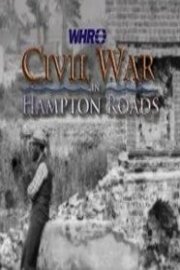



-
Genres
-
Channel
-
Premiere DateAugust 11, 2011

Civil War in Hampton Roads: Episode 1 - 1861 is a historical documentary that provides an in-depth look into the early days of the American Civil War in the Hampton Roads region of Virginia. Produced by WHRO, the episode offers a detailed account of the events that led to the conflict and the major battles that occurred in the region during the early years of the war.
The episode begins by introducing the key players in the conflict, including Abraham Lincoln, Jefferson Davis, and Robert E. Lee. The show then examines the tense political climate that led to the secession of the southern states and the eventual outbreak of war. Viewers get a glimpse into the heated debates that took place throughout the country as tensions between the North and South reached their boiling point.
As the show progresses, viewers witness the Union's attempts to maintain control of the important naval port of Norfolk, Virginia. The Confederacy, meanwhile, seeks to strengthen its position in the region by building forts and fortifications along the coast. The episode explores the efforts on both sides to gather troops and secure resources as war looms in the near future.
Throughout the episode, viewers are taken behind the scenes of some of the most significant battles of the early war years. Detailed animations and reenactments of battles bring the action to life, providing viewers with a clear understanding of the tactics and strategies used by soldiers on both sides. The show goes in-depth on the Battle of Big Bethel, a Confederate victory that took place just a few miles from Hampton Roads, and demonstrates the Union's confidence in a speedy end to the conflict.
In addition to the military maneuvers that defined this period, viewers also get a deep dive into the lives of the civilians living in the Hampton Roads area during the conflict. The show highlights the devastation experienced by those who were caught in the middle of a war, including the Union blockade of Hampton Roads, and the shortages of goods and fuel that plagued the Confederate army.
As the episode moves toward its conclusion, viewers get a sense of the broader impact of the early years of the Civil War on the nation as a whole. Throughout the conflict, Hampton Roads played a pivotal role in the Union's goal of dividing the Confederacy, and the show provides insight into what the fall of the region would have meant for the rest of the war.
Overall, Civil War in Hampton Roads: Episode 1 - 1861 is a fascinating and informative look at the early years of one of the bloodiest conflicts in American history. The attention to detail and historical accuracy are evident in every scene, and viewers come away with a deeper understanding of the events and people that shaped this critical period. Produced by WHRO, this show is a must-see for anyone with an interest in American history or the Civil War specifically.



